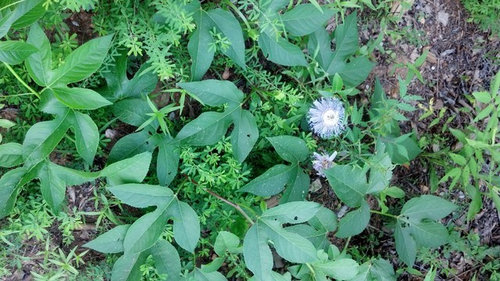Newbie at Maypop- just heard the name today
dahlias_bloom
9 years ago
Related Stories

DECORATING GUIDESPaper Chase: Wallpaper Through the Ages to Today
Get on a decorating roll with a wall covering that's been around for centuries but comes in more exciting designs than ever
Full Story
DECORATING GUIDESAbstract Art for Every Style Interior
Lighten a traditional setting, deepen a transitional one, establish a palette — abstract art can give more than just modern rooms a boost
Full Story
LIFE7 Things to Do Before You Move Into a New House
Get life in a new house off to a great start with fresh paint and switch plates, new locks, a deep cleaning — and something on those windows
Full Story
DECORATING GUIDESDecorating 101: Do It Yourself or Hire a Pro?
Learn the advantages and disadvantages of decorating alone and bringing in skilled help
Full Story
HOUSEKEEPINGThe Quick and Easy Way to Clean a Microwave
All you need is water and a couple of other natural ingredients to get your appliance sparkling and smelling fresh again
Full Story
DECORATING GUIDESRoom of the Day: A Spacious Porch Brings Family Life Outside
This Georgia back porch, decorated in neutrals and a mix of textures, serves as living, dining and family room almost year-round
Full Story
MOST POPULARHomeowners Give the Pink Sink Some Love
When it comes to pastel sinks in a vintage bath, some people love ’em and leave ’em. Would you?
Full Story
REMODELING GUIDES10 Tips to Maximize Your Whole-House Remodel
Cover all the bases now to ensure many years of satisfaction with your full renovation, second-story addition or bump-out
Full Story
REMODELING GUIDES8 Lessons on Renovating a House from Someone Who's Living It
So you think DIY remodeling is going to be fun? Here is one homeowner's list of what you may be getting yourself into
Full StorySponsored








dahlias_bloomOriginal Author
aurorawa
Related Professionals
Surprise Landscape Architects & Landscape Designers · Manhattan Beach Landscape Architects & Landscape Designers · Gainesville Landscape Contractors · Peabody Landscape Contractors · Arden-Arcade Landscape Contractors · Estelle Landscape Contractors · Laguna Hills Landscape Contractors · Maywood Landscape Contractors · Milford Mill Landscape Contractors · Selma Landscape Contractors · Eustis Driveway Installation & Maintenance · Banning General Contractors · Cheney General Contractors · Hampton General Contractors · Joppatowne General Contractorsfour (9B near 9A)
holzinger
tim45z10
four (9B near 9A)
tim45z10